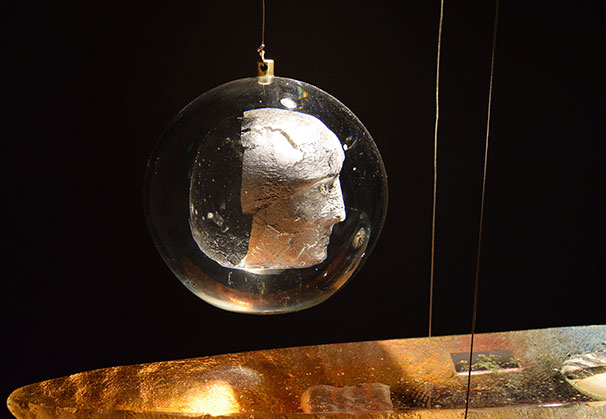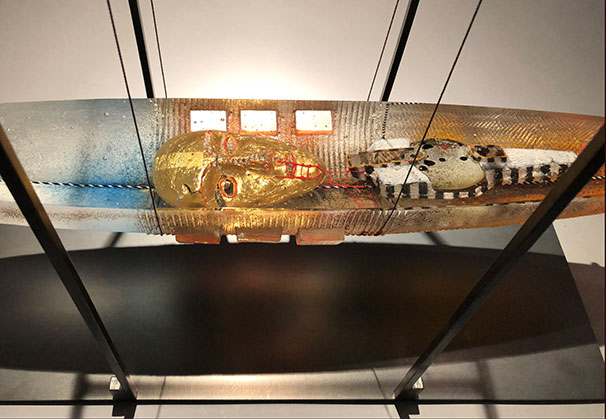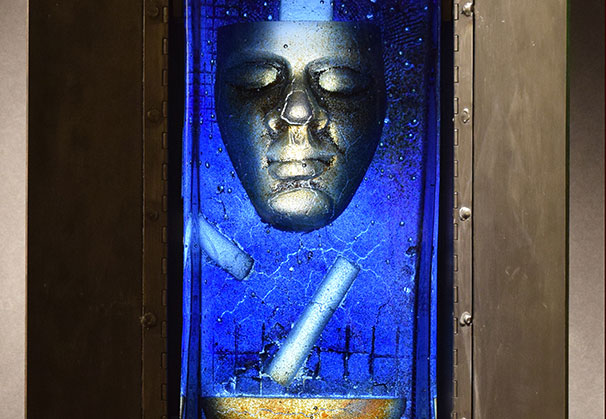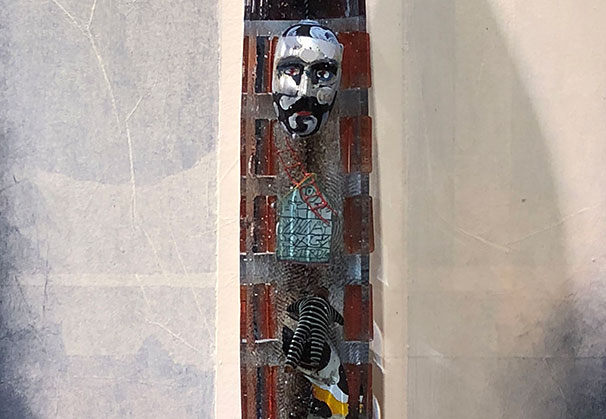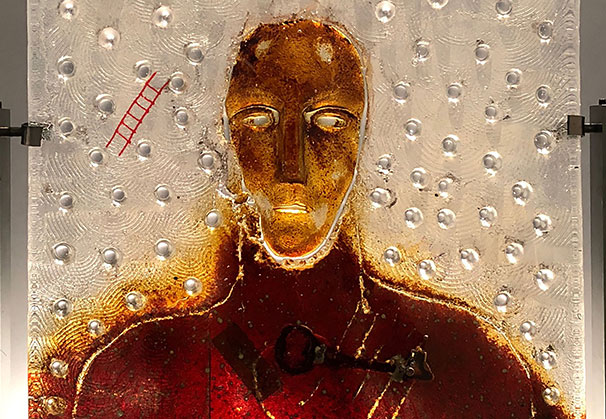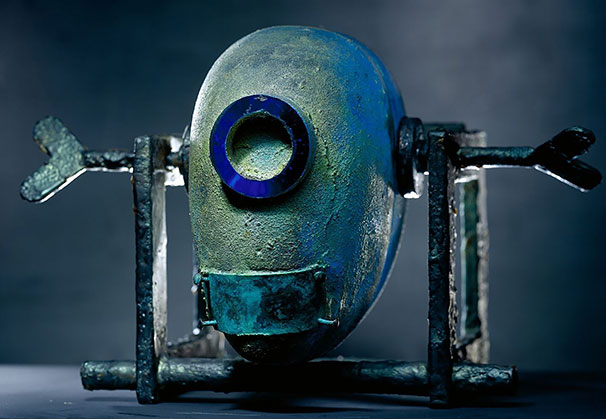Artist of the Month
December 2017

Bertil Vallien
Swedish glass master Bertil Vallien combines his creative and industrial training as the foremost artist working in sand-casted glass, an innovative approach to this very classical medium. His work has a symbolic and mystical narrative, in which the human head, boats, maps, stars, and other objects play recurring roles. Vallien is represented by Schantz Galleries, Stockbridge, MA, which is bringing his work to FORM Miami. Vallien will be traveling to Miami to attend the show.
Click on each photo to the right for a full picture.
Bertil Vallien

About Bertil Vallien
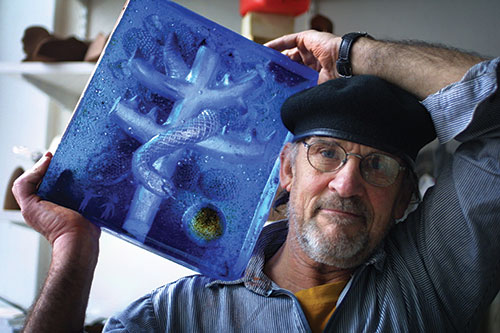 Swedish glass master Bertil Vallien was born in 1938 in a suburb north of Stockholm, where he felt the inclination to be an artist from a very early age. He studied ceramics at the Konstfack School of Arts, Crafts, and Design in Stockholm, then spent two years at the School for Advanced Industrial Design. At Konstfack, he graduated at the top of his class and was awarded a Royal Foundation grant. His love of ceramics took him to Los Angeles for a position with HAL Fromholt Ceramics, and soon he was meeting artists, critics, and gallery owners, attending events at California universities, and exhibiting his ceramics. In 1963, he was invited back to Sweden by the C.H. Åfors glass-factory, where he contributed to a successful reorganization of the company and designed many of their most well-known lines.
Swedish glass master Bertil Vallien was born in 1938 in a suburb north of Stockholm, where he felt the inclination to be an artist from a very early age. He studied ceramics at the Konstfack School of Arts, Crafts, and Design in Stockholm, then spent two years at the School for Advanced Industrial Design. At Konstfack, he graduated at the top of his class and was awarded a Royal Foundation grant. His love of ceramics took him to Los Angeles for a position with HAL Fromholt Ceramics, and soon he was meeting artists, critics, and gallery owners, attending events at California universities, and exhibiting his ceramics. In 1963, he was invited back to Sweden by the C.H. Åfors glass-factory, where he contributed to a successful reorganization of the company and designed many of their most well-known lines.
Vallien’s introduction to glass offered artistic opportunities that were lacking in ceramics, and blowing glass became central to his work. He has describe it as: “ladling matter out of a volcano and watching the glowing lava turn into ice. Knowing the exact moment at which to capture a shift of light or expression and wrench the secret from the glass is what it’s all about.”
As Sweden’s most innovative and well-known contemporary glass artist, Vallien has exhibited around the world from California to Israel. His work is in numerous public collections, including: The State Heritage Museum (St. Petersburg, Russia); the National Museum (Stockholm, Sweden); the Victoria and Albert Museum (London, England); the Art Institute of Chicago (IL); the National Museum of Modern Art (Kyoto, Japan); the Metropolitan Museum of Art (New York, NY); the Powerhouse Museum (Sydney, Australia); and the Museum of Fine Arts (Boston, MA). He has received numerous awards, including: Prince Eugen’s medal for Outstanding Achievement in the Arts (1995); an Honorary Doctorate from the University of Vaxjö (2002); the Gold Medal from the Royal Academy of Science, Stockholm (2005); and the Libenski Award, Seattle (2008).
Bertil Vallien’s focus on looking inward is achieved in myriad ways, one of which is his unique glassmaking technique. Vallien formulated his own method for casting glass in sand that creates depth and radiance in the material. Artworks are driven not by their final appearance—although their visual impact is stunning—but rather by their content. Vallien’s preparatory sketches are carefully considered blueprints of both the external form and the inner details. Layers—both physical and psychological—are created through a multistep process. Surface textures result from the imprint of objects placed on the walls of the mold, which are also dusted with powdered metal oxides to release color. As the molten glass is poured into the mold, Vallien incorporates a variety of objects from sheet metal and glass threads, to figures and other colored forms. Once the glass cools, the suspended animation reveals itself in full glory. Light reflects off the brilliant surfaces and assorted angles of the perimeter, but more dramatically it emanates from within.
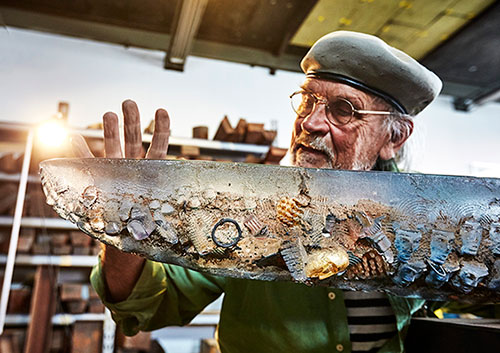 Vallien has said that “knowing the exact moment at which to capture a shift of light or expression and wrench the secret from the glass is what it is all about.” Just as his technical approach unearths internal “secrets,” so his visual motifs are explorations of the subconscious. The artist is motivated by various things—from stories he hears on the news, to people he has met, to his religious upbringing and questions about faith, to wars both historical and contemporary. Despite these concrete inspirations, the work is not meant to pose facile questions with prescribed answers. Vallien’s art embraces this idea, transforming the events and experiences that inspire him into universal archetypes and symbols, upon which viewers layer their own perspectives. A shifting “truth” is created when two spirits—that of the artist and that of the viewer—coalesce.
Vallien has said that “knowing the exact moment at which to capture a shift of light or expression and wrench the secret from the glass is what it is all about.” Just as his technical approach unearths internal “secrets,” so his visual motifs are explorations of the subconscious. The artist is motivated by various things—from stories he hears on the news, to people he has met, to his religious upbringing and questions about faith, to wars both historical and contemporary. Despite these concrete inspirations, the work is not meant to pose facile questions with prescribed answers. Vallien’s art embraces this idea, transforming the events and experiences that inspire him into universal archetypes and symbols, upon which viewers layer their own perspectives. A shifting “truth” is created when two spirits—that of the artist and that of the viewer—coalesce.
The Roman God Janus, the god of transition, gateways, and duality, oversaw the beginning and end of conflict. Vallien’s Janus sculptures have rough-hewn stone-like carved facades on one side and smooth transparent arcs on the reverse, within which images of closed-eye faces are suspended in the glass. This interest in the transitory nature of life has also inspired Vallien’s boat works. Vallien has written that he makes boats “that sink through memories and dreams, [that] require not latitudes to navigate by; they steer towards the horizon of imagination.”
Through both physical expression and symbolic associations, Vallien senses the world from the inside out and opens this channel of experience to his viewer. Definitive answers become unnecessary, and an enlightened, empathetic, and open-minded ethos rises.
Acknowledgment of Gallery:
We are grateful to Schantz Galleries, Stockbridge, Massachusetts, for providing the Artist of the Month.

The Art Alliance for Contemporary Glass (AACG) is a not-for-profit organization and leading resource for glass collectors, art enthusiasts, artists, gallerists, museum personnel, and educators on all things related to glass art. AACG provides a collaborative place for robust conversations about glass art, including its production, techniques, and trends. We also encourage and support the glass community through annual grants and artist scholarships.





